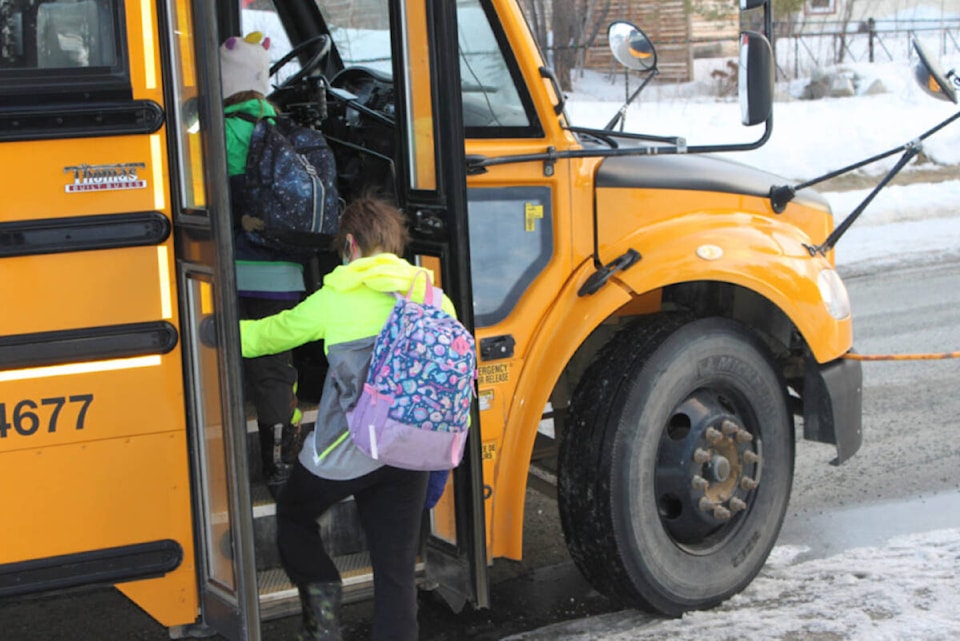Students and staff are going back to class in the Yukon under conditions that will look a lot like how the last school year ended.
Dr. Sudit Ranade, the Yukon’s chief medical officer of health, and Nicole Morgan, the deputy minister of Education, held a technical briefing via teleconference on Aug. 17 to outline school COVID-19 safety plans for the upcoming school year.
“I think the message I hear today is that the approach is similar to where we ended off at the end of the school year,” Morgan said.
Ranade told reporters the goal is to bring balance to some of the measures in place while acknowledging the risk factors and the burden on communities have changed, thus some of the guidance has shifted regarding disease transmission. He said that guidance will be reviewed as evidence changes.
For now, masks and physical distancing are not required on buses and in schools.
Ranade said some public health layers that remain in place, such as handwashing and disinfecting surfaces at appropriate intervals, enable the organization to “continue functioning.”
“We really, really recognize and focus on the fact that kids need to be able to socialize together, and that learning itself is a social activity that requires social behavior and social interaction in order to learn,” he said.
Vaccinations are continuing to be encouraged for everyone over the age of six months who is eligible.
There is a responsibility to remain home when sick, Ranade said, adding that the stoplight system has been revised.
“Parents and guardians know their children, and so really, the question is how are they, are they well enough to attend, but also keep in mind those symptoms, look at those symptoms, think about whether or not they’re appearing well or not, and then make a judgment call,” Ranade said.
Meanwhile, the Yukon’s interim guidance document points out that up to 36 per cent of children do not present symptoms.
Morgan said the department’s goals are to ensure Yukon schools provide “safe, inclusive and supportive” learning environments.
Children who were in kindergarten when the pandemic started are now going into Grade 3 — and there will be some catching up to do.
“While we’re still learning to live with COVID-19, one thing that we do know with certainty is that the optimal learning environment for children’s development and overall learning is in person with their teachers and support staff,” Morgan said.
Morgan conceded that maintaining stable learning environments for children has been “an immense challenge.”
With the return to school, Morgan predicted there will be “higher numbers of student absenteeism” due to “colds and other short-term illnesses.”
“That is not uncommon in the fall, as school opens up, and so we do expect that we will see some illness here in the fall, and of course, we expect that COVID-19 will be part of that mix,” Morgan said.
A switch to remote learning would be done on an individual school basis based on the context of that school’s situation.
“We are committed to keeping our schools open and safe for kids, especially those who depend on school as a reliable and safe place,” Morgan said.
“The pandemic has certainly taken its toll on everyone.”
Schools will not be open under certain conditions given limited operational capacity if the public health situation has changed and if staff have to stay away when ill, combined with the overall staffing shortage. Non-enrolling staff with specialized roles may be pulled in to make up for staff absences, Morgan said.
Morgan described the threshold for pivoting to remote learning as a sliding scale that will involve discussions with the school community, school council and associated governments to talk about next steps. For example, it may look like just a class or a grade moving to remote learning for potentially three or four days, instead of the whole school.
“At the end of the day the threshold — the place where we really would say we have no more options — is when operating the school becomes a safety concern,” Morgan said.
“We need to be able to have enough staff on site to ensure that we are welcoming the students in a safe environment.”
Contact Dana Hatherly at dana.hatherly@yukon-news.com
